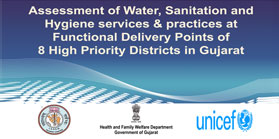Preventive & Social Medicine (PSM) known as Social & Preventive Medicine or Community Medicine in the Medicine Science is aiming the overall wellbeing of the community. It is the only branch which sees an in individual as a human being with its social milieu over and above the bundle of biological systems. PSM is multi disciplinary branch. It has evolved as both ba...
- Home
- |
- About Us
- |
- Healthline Journal
- |
- PG Forum
- |
- E-Resources Center
- |
- PGCHS&M
- |
- Contact Us








